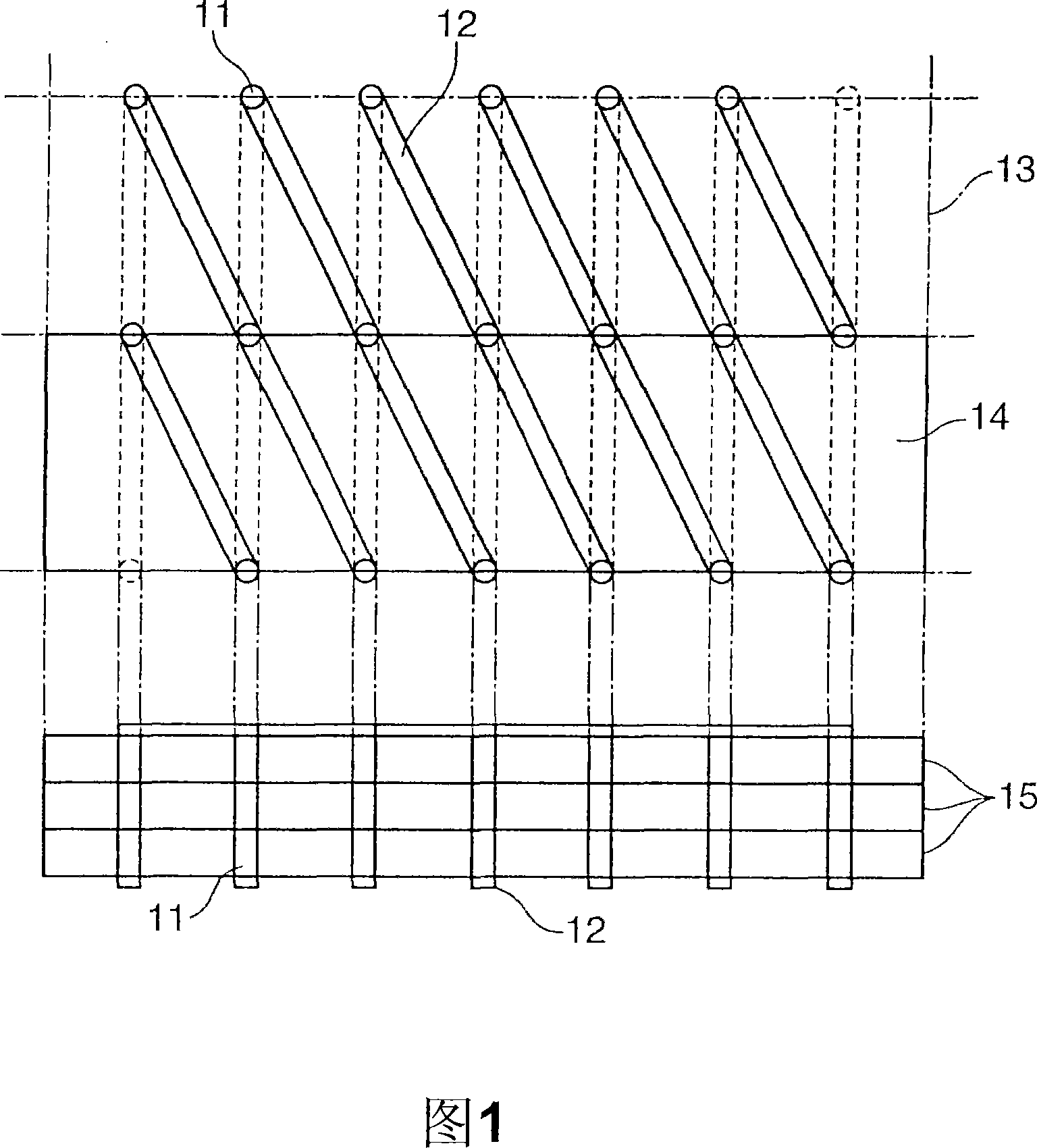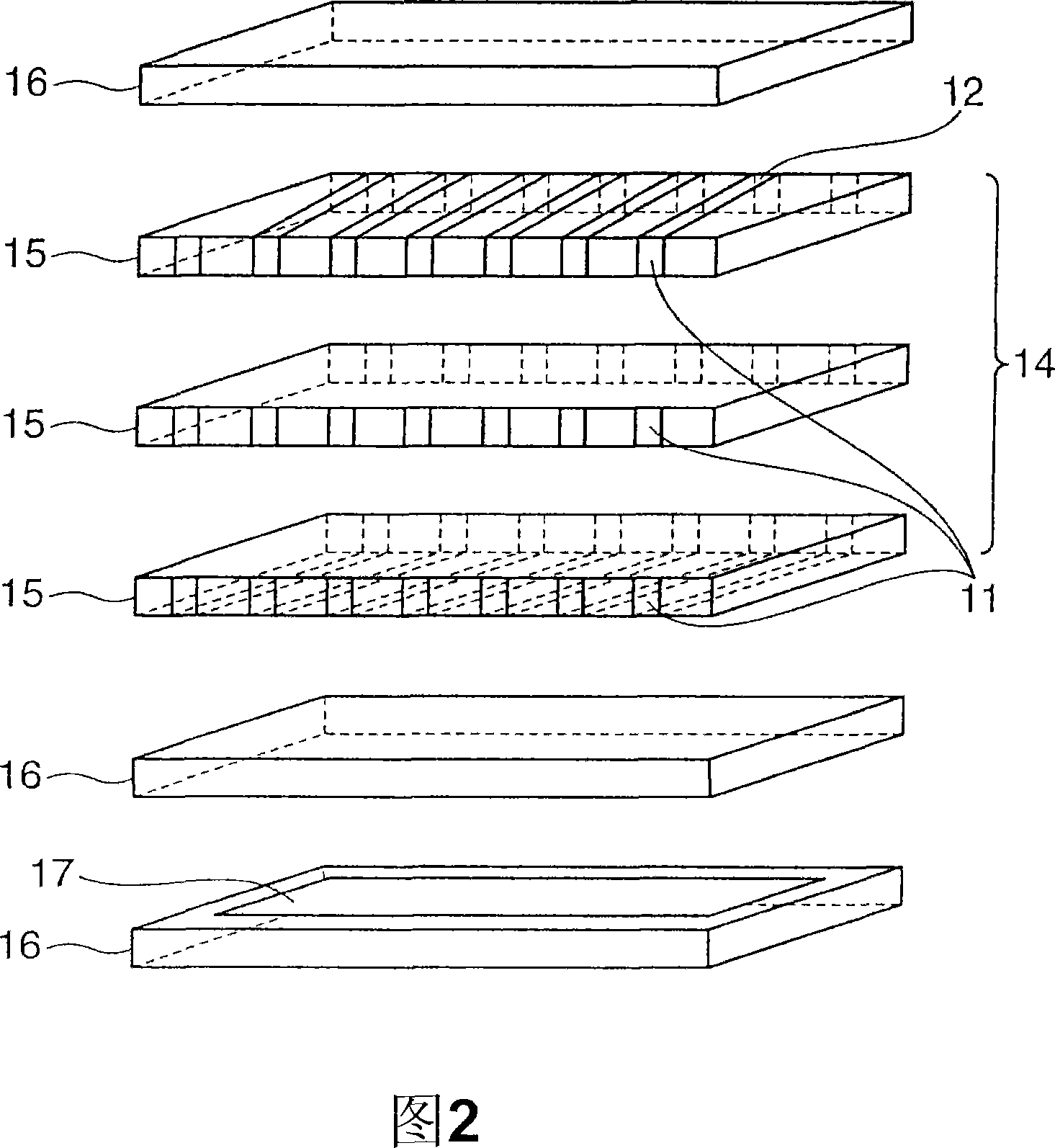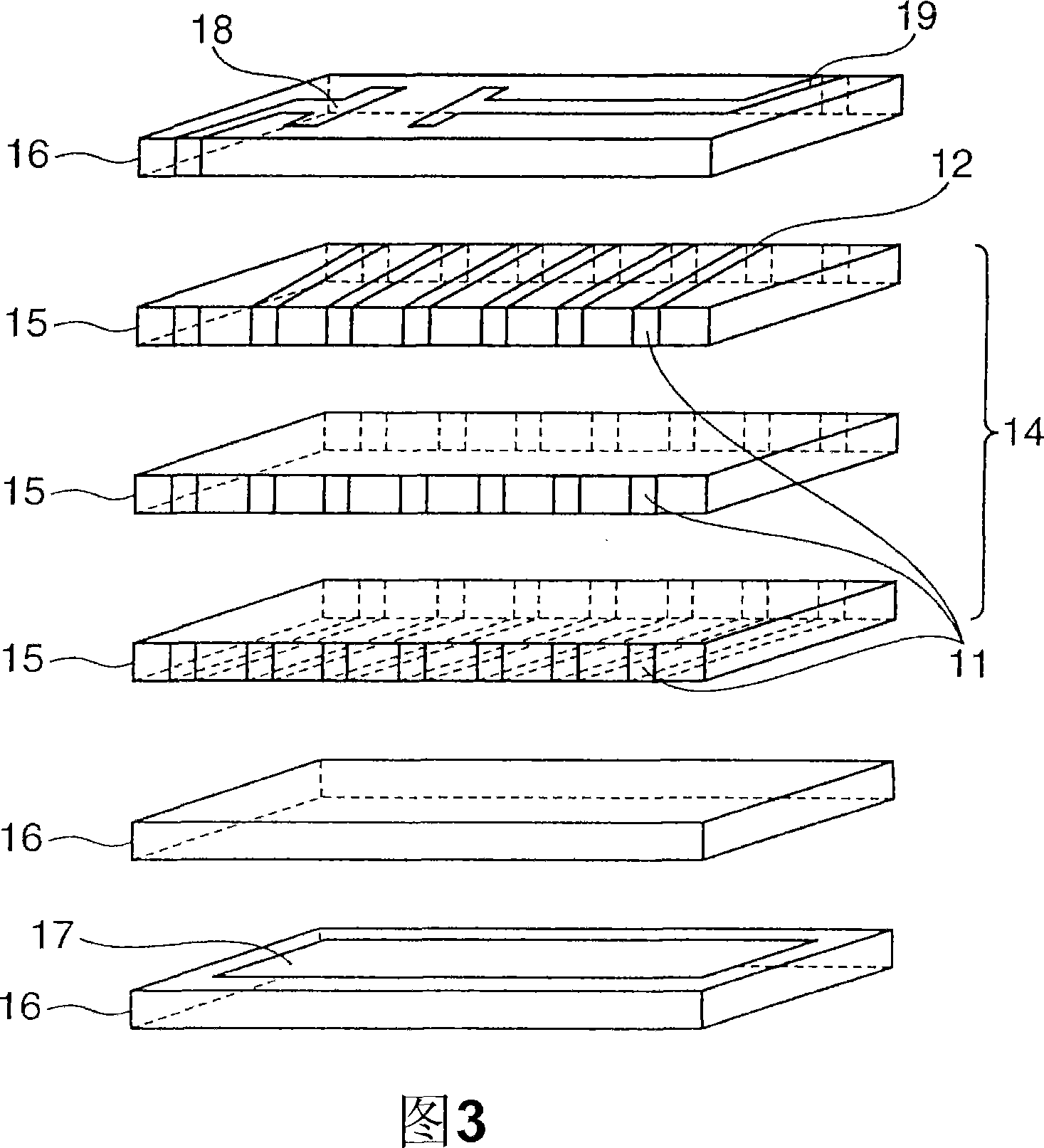Magnetic antenna
A magnetic antenna and magnetic technology, applied to loop antennas with ferromagnetic material cores, instruments, calculations, etc., can solve the problems of transmission and reception, magnetic antenna characteristic changes, characteristic deviations, etc., to reduce manufacturing costs and improve mass production , the effect of suppressing deviation
- Summary
- Abstract
- Description
- Claims
- Application Information
AI Technical Summary
Problems solved by technology
Method used
Image
Examples
Embodiment 1
[0059] The magnet antenna of the present invention is manufactured by using LTCC technology. First, the magnetic layer 15 is produced. In the making process of magnetic layer 15, use ball mill to mix Ni-Zn-Cu ferrite calcined powder (Fe 2 o 3 : 48.5 mol%, NiO: 25 mol%, ZnO: 16 mol%, CuO: 10.5 mol%. ) 100 parts (weight unit), butyral (butyral) resin 8 parts (weight unit), plasticizer 5 parts (weight unit), solvent 80 parts (weight unit) to prepare the adhesive liquid. The obtained adhesive liquid (slurry) was applied on a PET film using a doctor blade, and sheet molding was performed so that the side length was 150 mm square and the thickness at the time of firing was 0.1 mm.
[0060] In addition, in the manufacturing process of the insulating layer 16, the same as above, use a ball mill to mix Zn-Cu ferrite calcined powder (Fe 2 o 3 : 48.5 mol%, ZnO: 41 mol%, CuO: 10.5 mol%) 100 parts, butyral resin 8 parts, plasticizer 5 parts, solvent 80 parts to prepare the adhesive li...
Embodiment 2
[0072] The same green sheet as the magnetic layer 15 as in Example 1, and a green sheet as the insulating layer 16 made of glass ceramics instead of Zn—Cu ferrite were used. As shown in FIG. 3 , five sheets of green sheets constituting the magnetic layer 15 are laminated, a through hole 11 is opened thereon and silver paste is filled therein, and silver paste is printed on two surfaces perpendicular to the through hole 11, The coil 14 is thus formed.
[0073] Next, a green sheet constituting the insulating layer 16 is laminated on one side of the coil 14 . At this time, the conductive layer 17 is printed on the insulating layer 16 with silver paste. In addition, another insulating layer 16 is laminated on the other surface of the coil 14. On the insulating layer 16, through holes 11 are opened for connection with both ends of the coil 14, and silver paste is filled therein. On the surface of the insulating layer where the hole 11 is perpendicular, the coil lead terminals 19 ...
Embodiment 3
[0077] The same green sheet as the magnetic layer 15 and the green sheet as the insulating layer 16 as in Example 1 were used. As shown in FIG. 4 , five green sheets constituting the magnetic layer 15 are stacked, through-holes 11 are opened thereon and silver paste is filled therein, and silver paste is printed on both sides perpendicular to the through-holes 11, thus forming Coil 14.
[0078] Next, a green sheet constituting the insulating layer 16 is laminated on the lower surface of the coil 14 . At this time, the conductive layer 17 is printed on the insulating layer 16 using silver paste. Further, a green sheet serving as the magnetic layer 15 is laminated under the insulating layer 16 . A green sheet constituting the insulating layer 16 is laminated on the upper surface of the coil 14 . On the top of the insulating layer 16, in order to be connected with the two ends of the coil 14, a through hole 11 is opened, and silver paste is filled therein, and, on the surface ...
PUM
 Login to View More
Login to View More Abstract
Description
Claims
Application Information
 Login to View More
Login to View More - R&D
- Intellectual Property
- Life Sciences
- Materials
- Tech Scout
- Unparalleled Data Quality
- Higher Quality Content
- 60% Fewer Hallucinations
Browse by: Latest US Patents, China's latest patents, Technical Efficacy Thesaurus, Application Domain, Technology Topic, Popular Technical Reports.
© 2025 PatSnap. All rights reserved.Legal|Privacy policy|Modern Slavery Act Transparency Statement|Sitemap|About US| Contact US: help@patsnap.com



